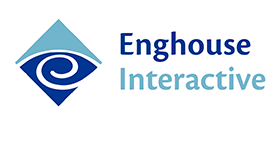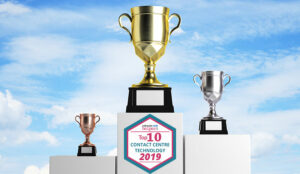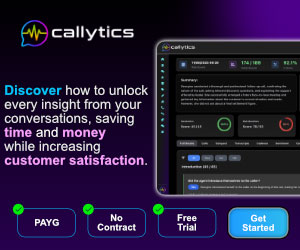Barbara Stuart at Enghouse explores 7 key ways contact centre software can elevate customer satisfaction in the travel and hospitably sector.
Can you guess the average resolution time in travel-related customer service?
It’s around 10 minutes and 36 seconds!
While that time might be appreciated by the customer who is getting the attention for those 10 minutes, it is inevitably contributing to long wait times and frustration for everyone else. Travelers expecting quick, seamless support will certainly be disappointed.
Whether for booking confirmations, itinerary changes, or real-time travel updates, each interaction is crucial to creating an elevated customer experience and travel and hospitality contact centres could be exploring ways to optimise each of these for better, faster service.
Today’s contact centre solutions are revolutionizing how brands meet these high customer expectations. New tools, many based on AI, are now available that can help improve essential performance metrics such as first call resolution (FCR) and customer satisfaction score (CSAT) along with average handle time (AHT).
By continuously monitoring and optimising these metrics, travel and hospitality brands can deliver faster, more personalised support-boosting CSAT and demonstrating the quality of service that travellers count on.
7 Ways Contact Centre Solutions Boost Customer Satisfaction in Travel and Hospitality Industry
Reducing FCR is a game-changer in the travel and hospitality industry. A mere 1% improvement in FCR creates a ripple effect of better efficiency and higher customer satisfaction.
Cloud-based contact centre solutions leverage advanced features to drive these improvements and more. Here are seven ways they empower travel and hospitality companies to deliver seamless, personalised customer experiences:
- Boost First Call Resolution (FCR) with better knowledge support
- Lower Customer Effort Score (CES) through predictive outbound dialing and SMS
- Improve Net Promoter Score (NPS) with self-service options and targeted agent coaching
- Reduce Average Handle Time (AHT) with summarization and AI-powered virtual assistants
- Expedite query resolution through unified communications and collaboration
- Elevate customer experience with omnichannel support and AI-enabled translation
- Reduce agent attrition with improved monitoring and coaching
Let’s explore.
1. Boost FCR With Better Knowledge Support
In the travel and hospitality industry, peak periods like holidays or weather disruptions drive a surge in customer inquiries, everything from booking confirmations to urgent cancellations.
FCR is more critical in these moments than ever, minimising repeat calls, delays, and frustration, and one of the most critical factors for delivering FCR is having the right information to respond accurately and consistently to inquiries.
Shep Hyken’s The State of Customer Service and CX report highlights the value of well-informed agents, with 89% of customers surveyed rating knowledgeable employees as either important or very important
2. Lower CES Through Predictive Outbound Dialling and SMS
Reducing the Customer Effort Score (CES) is key to creating a seamless experience in the travel and hospitality industry.
Customers appreciate proactive communication for tasks like booking confirmations, deadline reminders, or discount expirations, which minimises their need to reach out.
Predictive outbound dialling facilitates this outreach and ensures that customers are contacted promptly, reducing wait times and ensuring they don’t miss out on any opportunities.
3. Improve NPS With Self-Service Options and Targeted Agent Coaching
When seeking assistance, customers often encounter challenges such as long wait times or inconsistent service. These issues can negatively affect their overall experience and reduce the likelihood of recommending the brand, a key factor measured by Net Promoter Score (NPS).
Virtual agents, integrated across channels, provide real-time, accurate responses for tasks like retrieving booking details or confirming reservations.
According to reports, nearly 30% of travellers are highly interested in hotels that provide automated messaging for customer service, showing the growing demand for seamless, self-service solutions.
4. Reduce AHT With Summarization and AI-enabled Virtual Assistants
Customer requests like modifying travel dates, upgrading accommodations, cancelling bookings, or tracking lost baggage often require detailed assistance, increasing AHT.
Additionally, After-Call Work (ACW), time spent by agents documenting interactions, further adds to AHT. It reduces agent availability, increases customer wait times, and slows down operations.
5. Expedite Query Resolution through UC and Collaboration
Agents in travel and hospitality often handle complex issues, such as billing discrepancies, special bookings, or clarifications on refund policies.
Resolving these often requires contacting colleagues or subject matter experts (SMEs) across departments or locations. Without seamless communication, delays can slow responses and frustrate customers.
6. Elevate Customer Experience with Omnichannel Support and AI-enabled Translation
Customers expect seamless communication and flexibility when reaching out for support.
For instance, a traveller might start a conversation about itinerary changes via web chat and later call for further assistance, and then need to text because the noise level is too high to communicate properly with the agent.
Without omnichannel support, they would need to repeat information, causing frustration and delays.
7. Reduce Agent Attrition with Improved Monitoring and Coaching
The high-pressure demands of travel and hospitality contact centres, especially during peak seasons, can overwhelm agents, leading to burnout and high attrition rates.
Long hours, demanding customers, and the lack of timely support often exacerbate these challenges, making proactive solutions essential.
This blog post has been re-published by kind permission of Enghouse Interactive – View the Original Article
For more information about Enghouse Interactive - visit the Enghouse Interactive Website
Call Centre Helper is not responsible for the content of these guest blog posts. The opinions expressed in this article are those of the author, and do not necessarily reflect those of Call Centre Helper.
Author: Enghouse Interactive
Reviewed by: Rachael Trickey
Published On: 14th Oct 2025
Read more about - Guest Blogs, Enghouse Interactive






 Enghouse Interactive delivers technology and expertise to help bring your customers closer to your business through its wide range of customer contact solutions.
Enghouse Interactive delivers technology and expertise to help bring your customers closer to your business through its wide range of customer contact solutions. 






























